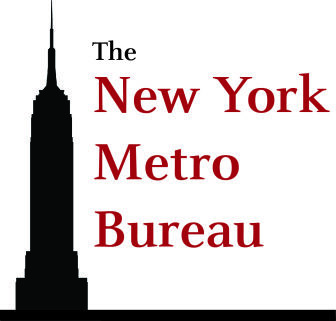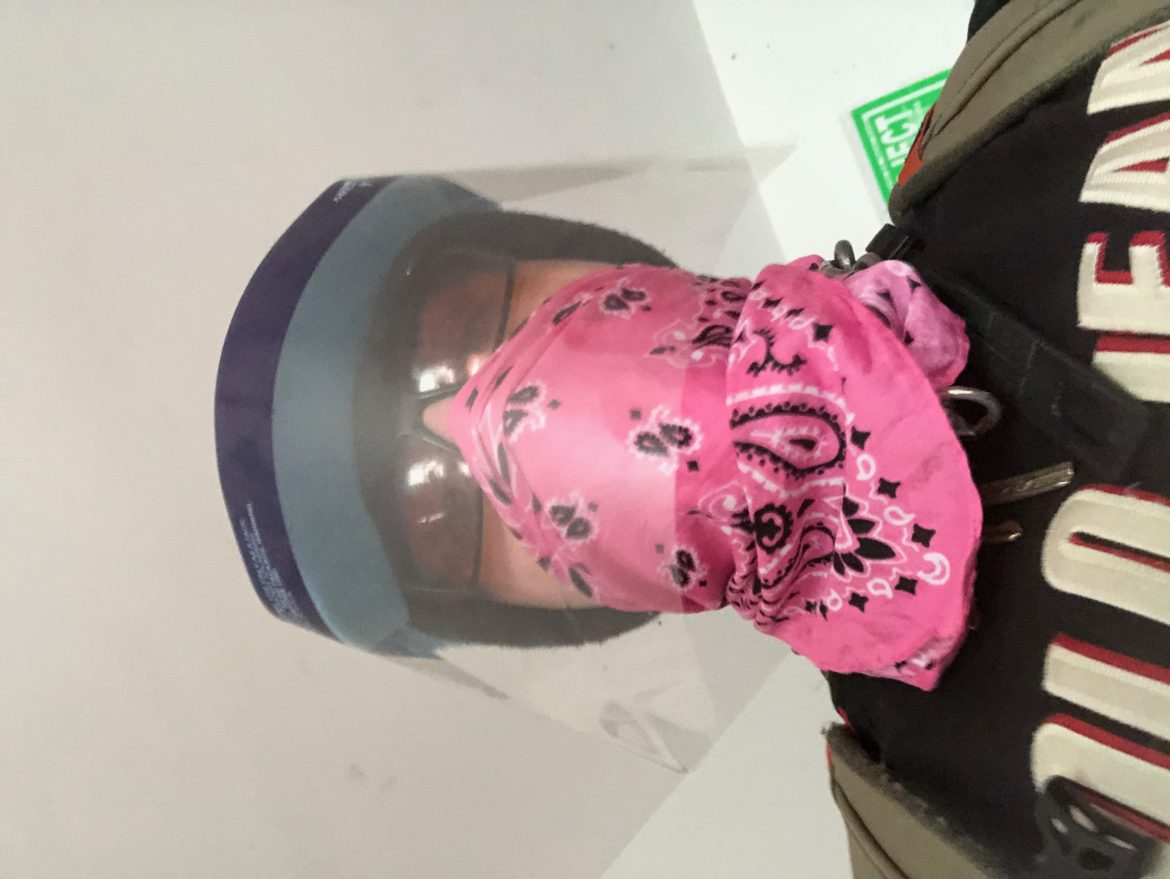![]() Watch videos below.
Watch videos below.
NEW YORK — Protests can have peculiar sounds and vibrations. There are sensations that only people who take part in them can feel or talk about, they say. There’s a palpable electricity coursing through the air and the crowd.
Devin Khan, 22, could sense all of that, as well as a thick smell of spray paint and sharpie markers, as he marched with several hundred other people down Flatbush Avenue, in the Prospect Heights neighborhood of Brooklyn Saturday afternoon to protest the death of George Floyd, an unarmed black man killed by police in Minneapolis.
 Khan and a group of friends were walking through the protesters, when he saw police cars driving close to the crowd. He knew then the police were aiming to disperse the protesters. Shortly after a large crowd had left Parkside and Ocean avenues, a police car speeding at close distance smashed a female protester’s bicycle.
Khan and a group of friends were walking through the protesters, when he saw police cars driving close to the crowd. He knew then the police were aiming to disperse the protesters. Shortly after a large crowd had left Parkside and Ocean avenues, a police car speeding at close distance smashed a female protester’s bicycle.
“Their intent was to scare and injure people,” Khan said. “That’s what it felt like. It was really scary.”
Police aggressiveness turned people angry, he said. Once they had walked to nearby St. Marks Avenue, Khan and a group of other protesters pulled traffic barrels and steel barricades off the side of the street and into the middle of the lane to deter police cars from driving close to the crowd again.
A police car approached and stopped before the barricade.
Khan, who is a photographer, began snapping frames on his camera. He saw a series of objects getting thrown at police from various sides, one them cracking the windshield.
A video recorded by Khan moments before the incident shows a female protester standing on the hood of the car, and people near the vehicle. One appears to hit one of the car’s doors with a skateboard, while another flings what looks like the wheels of a cart into the windshield.
Seconds later, the car plowed into the people who were just standing in front of the car, thrusting Khan and other people several feet away.
“The car rams into us, and it threw a lot of people back. It sent me back pretty far and it hurt me a lot,” Khan said.
Wtf!!! #BlacklivesMaters #brooklynprotest pic.twitter.com/S1oet8JC0x
— Pierre G. (@pgarapon) May 31, 2020
Other protesters were seriously injured. Some of them had their arms slashed open and had to be taken to the hospital, he said.
The incident ruined what Khan described as a “powerful moment” in which the protest has been provocative but peaceful until that moment.
“It’s sad to have that energy met with violence, and see people crying, and see people getting hurt and screaming for help,” he said.
Videos that caught the series of incidents (two police vehicles actually hit protesters at the same scene) went viral on social media, sparking public outrage and making national headlines.
Khan said he wouldn’t be able to identify the officers in the car.
Mayor Bill de Blasio defended the officers in a press conference the day of the incident, saying: “If those protesters had gotten out of the way ... we wouldn't be having this conversation.”
The following morning NYPD Commissioner Dermot Shea issued an official statement saying he was “extremely proud” of the way NYPD officers had handled the disturbances of Saturday.
Gov. Andrew Cuomo called the videos “very disturbing” and appointed New York Attorney General Letitia James to review episodes of blatant police misconduct during the protests, including the incident Khan was a part of, and one of a young female protester who was shoved by a police officer onto the ground and had to be hospitalized for seizures.
By Monday evening, the mayor adopted a more sympathetic tone and announced that the New York Police Department was doing its own internal investigation on the incident.
“There is no situation where a police vehicle should drive into a crowd of protesters or New Yorkers of any kind,” de Blasio said.
Khan moved to New York City in 2016 to study photography. As a Washington, D.C., native, he has been to protests as long as he can remember. The first one was in 2003, at the time the United States had invaded Iraq. His parents took him when he was still a little boy.
Growing up, Khan became more and more aware of the power of protest and civil disobedience.
“It’s important for people to show the system — the people who are in power, the government, the people in power — that they’re not the people they’re serving, and that they seem to forget that. It’s important to get bodies out there,” Khan said.
Upon watching the video of Floyd’s death, Khan knew there would have been protests, and that he would have joined them.
“It was the right thing to do,” he said.
The same day he was struck, Khan said he endured what he described as other abusive tactics that are now the focus of the state’s probe.
Earlier Saturday, Khan was marching with hundreds other demonstrators in the Brooklyn neighborhood of Crown Heights, when a police helicopter descended so close to the crowd that it felt it was going to crash.
“We were marching very, very peacefully and a helicopter comes down and flies at about 20 feet above the ground, above the people, to spray dirt and disperse the crowd. That was terrifying. It almost looked like it had lost control,” he said.
Khan called it a “fear tactic” that had no real purpose other than frightening people.
“I don’t know what the outcome of that was supposed to be,” he said. “It only gets people more upset, it further proves the point of the protest. It’s like fuel into the fire.”
That confrontation set the tone for the rest of the day, Khan said.
Police officers on the street warned the crowd at different moments that their assembly was “unlawful” and that they would be arrested if they failed to disperse. Dozens of people were arrested as the march proceeded towards Barclays Center.
“No intention of looting. No intention of smashing people’s homes, and still the police were pepper spraying people and hitting them with batons,” Khan said. One of his friends was hit so severely that he had to go to the hospital for possible nerve damage.
Later that evening, Khan and his friends walked across the Manhattan Bridge as part of a large crowd. They were met with batons. A police officer hit Khan twice in the stomach.
“He screamed to my face, ‘Fuck you! Fuck you! Get the fuck out!’” Khan recalled.
By the end of the day, the police had started to lose control. Violence and looting began. Fast-moving groups of people shattered storefronts and set police vehicles on fire. Police started slamming protesters on the ground and arresting dozens, even those who were there peacefully.
“It felt as though the police were scared of us,” Khan said. “Before we would even do anything, they knew that we were wrong.”
